REMODELING IN THE VICTORIAN AGE (1894)
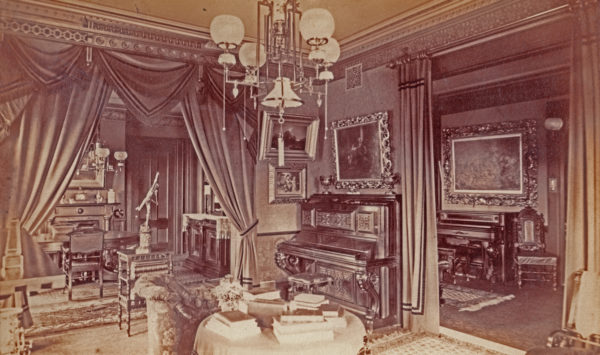
******************************************************************************************************************************** Brownstone Detectives investigates the history of our clients’ homes. The story you are about to read was composed from research conducted in the course of one of those investigations. Do you know the history of YOUR house? ******************************************************************************************************************************** In the early 1890s, Good Housekeeping magazine published a series of articles by Mrs. Oliver Bell Bunce – the wife of the author – on the proper maintaining of a household. The following piece expounded upon the decoration of homes in the late 19th century – what was “in” and what was not. It may not serve as a guide to how every home was kept, but it does give a peek into how some interior decorators were thinking on the subject. Also, as the Bunces lived in New York City, the article can be seen through the lens, more specifically, of laying out the preferred interior use and decoration of a brownstone or townhouse. WHAT TO DO WITH MY LADY’S HOUSE n this age, when home decoration has been reduced to a science, when artistic treatment is looked upon with so much favor, when every part of a room which is unsightly can. if the good caretaker knows the value of art and its properties, be made attractive, a homely object will, under her hands, become a thing of beauty, and many an eyesore develop into an enduring charm. For the treatment of doors, there are various ways and methods by which they can be adapted to circumstances. We will […]
THE “GOETHE” AT No. 461 GREENE AVE. (1890)
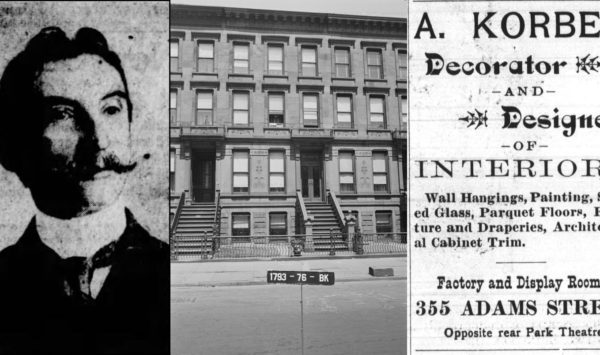
******************************************************************************************************************************** Brownstone Detectives investigates the history of our clients’ homes. The story you are about to read was composed from research conducted in the course of one of those investigations. Do you know the history of YOUR house? ******************************************************************************************************************************** Starting in the late 1880s, the Brooklyn Daily Eagle started a series of articles which described – in great length and detail – the interiors of individual newly-built or renovated houses. These houses were usually brownstones belonging to those affluent or upper-middle-class members of society. Not only did such articles describing the interiors of neighbors’ homes sell newspapers, but the articles also served as advertising directed at those in the market for a townhouse to have a home of their own. These advertisement-articles were placed, likely at the expense of the designers responsible for the “interior decorations” being described, as each piece often ended with what readers wanted to know: “Who did the work?” WORK WAS DONE BY A. KORBER Albert Korber, who went by “A. Korber,” was an architect and designer who settled in Brooklyn at the age of 15. Three years later he “started business on Adams street as a manufacturer of picture frames and moldings. Several years later he founded the decorating business which bears his name, with showrooms on Montague street and a factory for the manufacture of interior woodwork and furniture in South Brooklyn.” By 1889, Korber was 42, a successful decorator throughout the City of Brooklyn. His specialty was making the entrance to a house […]
A JUNGLE MARCHED THRU BED-STUY (1900)
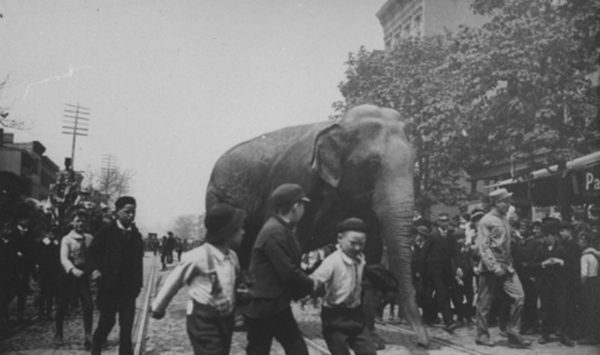
******************************************************************************************************************************** Brownstone Detectives investigates the history of our clients’ homes. The story you are about to read was composed from research conducted in the course of one of those investigations. Do you know the history of YOUR house? ******************************************************************************************************************************** The grey mastodons pounded threateningly down Howard Avenue past the gloomy darkness of Saratoga Square Park. Lumbering slowly around the corner onto Macon Street, they let forth a great trumpeting roar, swaying rhythmically to and fro. As their long, great shadows danced menacingly on the canopy of the park’s trees, cast vaguely by the faint light of the omnipresent red and green flickering colored torches, they presented a terrifying and foreign spectacle. Hundreds of small boys darted in and out of the gathering throngs to view the intimidating beasts, instilling in the air a noticeably heightened excitement which spread further and further down the block, as the presence of these creatures became known. As these majestic monsters moved towards 738 Macon Street, they let out their crushing roar which now could be felt more by the bones than by the ears. A great moan of excited joy leapt, in a synchronized response, from the lips of the visually excited crowd as each and every person lining the Macon Street parade route viewed the very first elephants. As the grey forms, dabbled in red and green light, diminished in size on their trek towards Ralph Avenue, they were replaced by the great humpbacked dromedaries with their inartful steps and studied looks of […]
FOOLS AMONGST THE PENNY HUNTERS (1895)
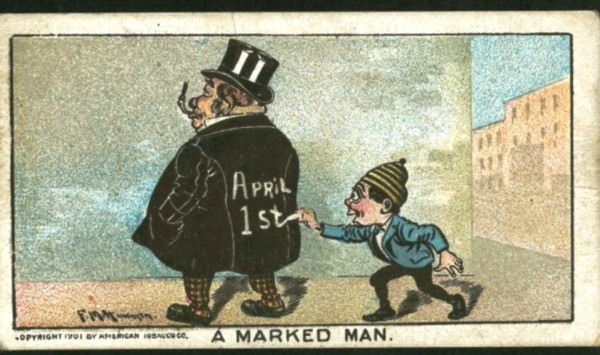
******************************************************************************************************************************** Brownstone Detectives investigates the history of our clients’ homes. The story you are about to read was composed from research conducted in the course of one of those investigations. Do you know the history of YOUR house? ******************************************************************************************************************************** April Fool’s jokes have a long and colorful tradition of the instigation of harmless pranks on hapless “fools.” They have often been played with great success on their unsuspecting targets at least since the 16th century. In 1895, one April Fool’s joke brought about not only the public mockery of one Brooklyn businessman – but also a great loss of some “small change.” THERE’S GOLD IN THEM THAR PENNIES! On April Fool’s Day in 1895, a Bath Beach business man, John Brodie of Bay Seventeenth street let his greed get the best of him. On that fateful day a “stranger entered Brodie’s collecting agency office” and “let out the secret that all the 1892 cents would be recalled and that their value had suddenly jumped to 8 cents each.” The reason, it was averred, was that “by mistake some gold had become mixed up in the copper.” Brodie saw a chance to make a great profit, but only if he acted swiftly and quietly. He, thus, “sent his office boy around to the different banks and secured fully $50 worth of coppers. Not satisfied with this he visited various stores at Bath Beach and gathered in all the pennies he could.” But Brodie could not keep the secret of the path […]
THE BABY FARM OF UTICA AVENUE (1890)
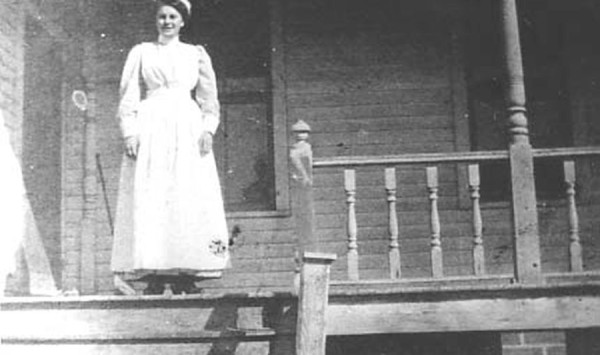
******************************************************************************************************************************** Brownstone Detectives investigates the history of our clients’ homes. The story you are about to read was composed from research conducted in the course of one of those investigations. Do you know the history of YOUR house? ******************************************************************************************************************************** The red flags began to go up slowly – one by one – as babies began to die. After Annie Smith, 1 month and 14 days old, it was wee Cora Tanner, just 7 days old. With two infant deaths being reported within the same month from a private residence at 126 Utica Avenue, Inspector Corcoran of the Department of Health was detailed to look into the matter. THE INSPECTION Arriving at 126 Utica Avenue, Inspector Corcoran discovered a “two story frame structure in which are available for maternity and nursery purposes four small rooms and an attic apartment.” Tending this facility, according to the Brooklyn Standard Union, was a Mrs. Emily V. Wilson, her daughter, and a nurse. Onsite, though, was also one baby and five women “patients.” Corcoran asked Mrs. Wilson to show her license, upon which request “she produced two documents given her by the Department of Health.” The first, dated 12 September 1886, granted permission to board four children at 100 Utica avenue, while the other bearing the date of 18 June 1888, permitted her to keep six children at 795 Herkimer street. She had no license for 126 Utica Avenue. At this point the inspector asked to view the house’s register, “which the law requires of […]
THE CAT MAN OF GWINNET STREET (1896)
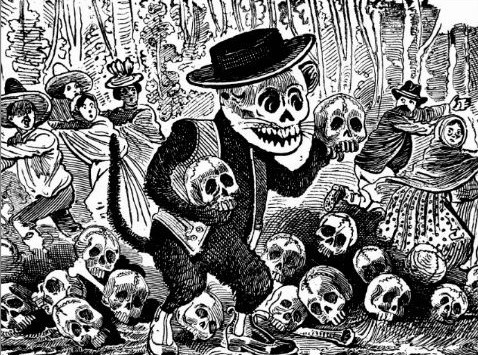
******************************************************************************************************************************** Brownstone Detectives investigates the history of our clients’ homes. The story you are about to read was composed from research conducted in the course of one of those investigations. Do you know the history of YOUR house? ******************************************************************************************************************************** Haasen-pfeffer is a German dish best served hot. A traditional German rabbit stew, it was brought over to the US by immigrants. (Hase is German for “hare,” and pfeffer is German for “black pepper.”) Although rabbits are the chief ingredient in the old-world dish, German immigrants in the early days of the country would often substitute squirrels. But never cats. Until Herman Fritsch appeared on the scene in Williamsburg in 1896. THE CAT MAN OF GWINNET STREET The locals were first alerted to the possible rabbit substitute in their stews when several neighbors heard a terrible racket occurring one night at Fritsch’s home, 168 Gwinnett Street (now Lorimer Street). As the neighbors listened, they began to hear a horrible howling coming from his rooms above a liquor store. They thought the cries sounded like “the screams of a child or woman in distress.” A consultation amongst several of the neighbors quickly took place, after which they decided that “murder was surely being committed in Fritsch’s apartments.” So Officer Lang of the Clymer Street Station was called for. While the neighbors waited, though, there was a last despairing shriek. And then all was still. OFFICER LANG ON THE JOB By the time Officer Lang arrived, “not a sound was heard” within the […]
“THE HATS TEMPTED MARY” (1890)
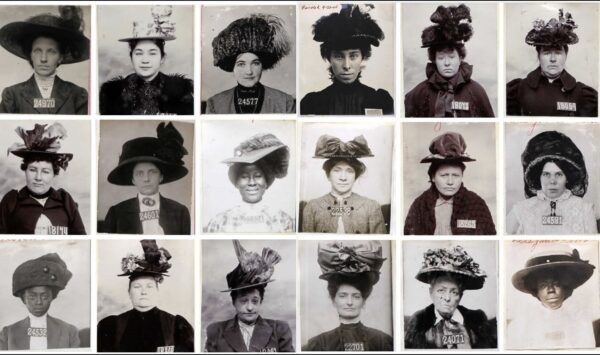
******************************************************************************************************************************** Brownstone Detectives investigates the history of our clients’ homes. The story you are about to read was composed from research conducted in the course of one of those investigations. Do you know the history of YOUR house? ******************************************************************************************************************************** A cursory search through old newspaper archives of the 1890s and early 1900s will produce a large number of incidents whereby patrons of dry goods, and other such stores, were summarily and stealthily robbed by clandestine crooks. Solomon Milkman’s Millinery House – at 442 & 444 Fulton Street – was no exception. A wholesale hat store primarily patronized by women, it soon became the target of thieves looking for money packaged in tiny, easily hidden and transportable containers – purses. The first thieves, though, saw the store itself as the easy target. Usually women, they pilfered mostly feathers, buttons, and other accouterments for the embellishment of women’s hats. In 1890, the first of Milkman’s thieves made the morning papers when a wealthy South Brooklyn woman was caught red-handed, so to speak, stealing goods valued at $3. She would not give her name to the police, as her husband was well-known, so they referred to her as Jane Doe. The police kept her – and her husband’s – identities secret and allowed the wealthy businessman husband of hers to escape humiliation. The following year, in 1891, Nora Duffy, 19, of 79 Sackett Street, was the next identified thief. A “tawdrily dressed young woman,” she was noticed by a detective of Wechsler & […]
BROOKLYN WOMEN LIKE FOREIGN HELP (1915)
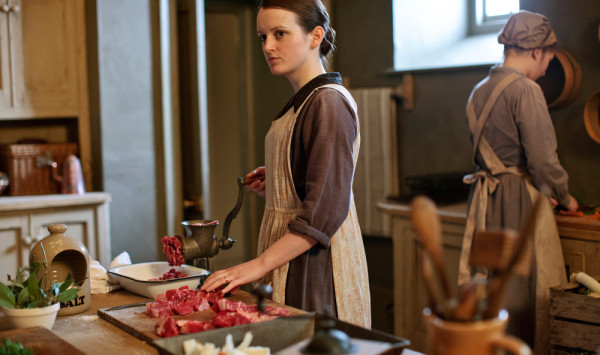
******************************************************************************************************************************** Brownstone Detectives investigates the history of our clients’ homes. The story you are about to read was composed from research conducted in the course of one of those investigations. Do you know the history of YOUR house? ******************************************************************************************************************************** American housewives have always been fond of foreign servants. Brooklyn women were – 100 years ago – more than typical of that trend. Very much like today’s dependence on foreign help (primarily labor from those of Mexican extraction), this trend was likely due – back in Victorian and Edwardian Brooklyn – to an eagerness on the behalf of these women, to have the work in a land where they had few options, as well as to an eagerness, on the behalf of the homeowners, to having cheaper, more dependable labor. Such “help” in the house, according to the New York Times, “freed women from many chores and enabled them to use their time to enhance their moral character and educate themselves – to paint, do needlework, write, engage in physical activity and travel.” The demand, though, for “foreign-speaking girls,” in particular, was “strong,” a 1915 report from a Brooklyn labor office noted. And it was so “especially in Brooklyn,” they noted, where many second generation immigrants lived and thus presented an atmosphere where “a very large number of positions are now waiting for girls who are Polish, German or Scandianvian.” A look at the census of a typical Brooklyn block of the period would produce as many as 10-20 live-in servants, […]
WERE THESE BROOKLYN’S FIRST CO-OPS? (1899)
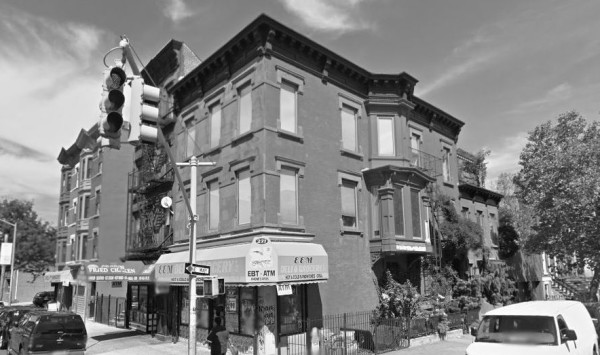
******************************************************************************************************************************** Brownstone Detectives investigates the history of our clients’ homes. The story you are about to read was composed from research conducted in the course of one of those investigations. Do you know the history of YOUR house? ******************************************************************************************************************************** Back in 1899, Bolton Hall, the son-in-law of lawyer and real estate investor, William H. Scott, convinced Scott to allow him to use some of his real estate units to experiment with a “novel co-operative idea.” “Mr. Hall’s idea was simply to let tenants share the profits of the property they occupied,” noted the New-York Tribune. “Previous to April, this year, Mr. Scott was the owner of houses at Nos. 231, 223, 225, 219, and 221 Reid-ave., Brooklyn. The property lies between Hancock st. and Jefferson ave., and consists of three single and two double houses.” Hall, who would spend his life working on behalf of the poor, had started the “back-to-the-land movement” in the United States at the time, which was a forerunner of the Green Thumb project and consisted of encouraging people to begin gardens on vacant lots. Hall noted that the tenants of the buildings eagerly entered the scheme and that during a 4-month period the plan was successful. Hall told the tenants that it was proposed to value the buildings at ten times their proper rent when full, which would be $8,000 each for the single houses and $14,000 for the double,” noted the New York Times, “and to reserve as Mr. Scott’s share 5 per cent. […]
THE SEVEN SISTERS OF LINCOLN PLACE (1906)
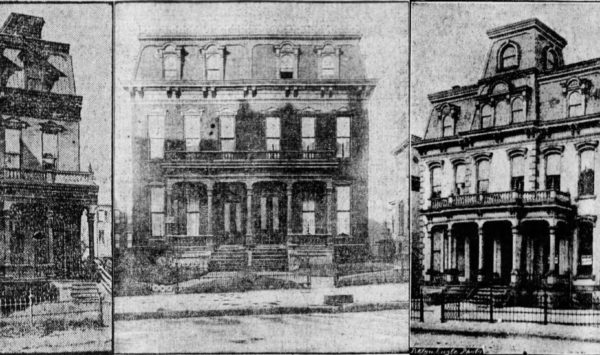
******************************************************************************************************************************** Brownstone Detectives investigates the history of our clients’ homes. The story you are about to read was composed from research conducted in the course of one of those investigations. Do you know the history of YOUR house? ******************************************************************************************************************************** If the Big Bad Wolf had had anything to do with it, he would have always voted for the predictability of a good detached wood-frame villa. It had gotten him far in his day and, what’s more, it had gotten him fed. But it wasn’t the Three Little Pigs’ hairy nemesis that was making housing decisions in Park Slope, Brooklyn around the turn of the last century. Rather, it was the Pigs, themselves, who wanted more modern, sturdier, up-to-date brick and masonry structures. THE DEATH OF VILLAS In early 20th century Brooklyn, a combination of home buyers’ indicators was guiding downward the valuation of older Victorian-era properties. First of all, impacting the long-term downward trajectory, there were the laws promoting fire zones that prevented structures built with wood frames from being constructed going forward. There was also their susceptibility to fire (which prompted these fire zones in the first place). And there was their age – a large number of free-standing villas still around in Brooklyn at the time were at least 25 years old – most others were many years older that that. Most visible, however, were the tastes of the early 20th century home buyers which leaned heavily in the direction of sturdy masonry buildings. The variable, however, which […]